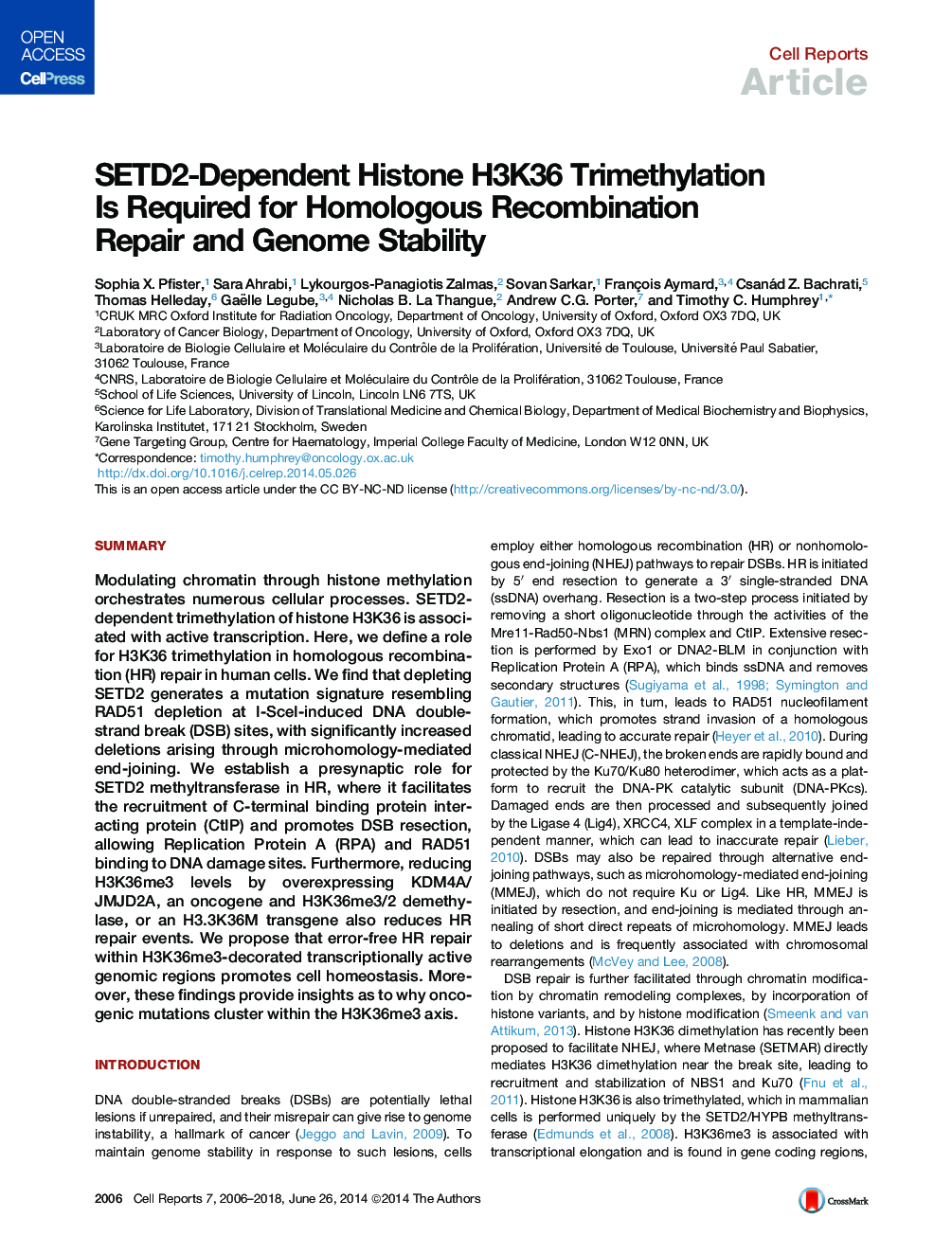| Article ID | Journal | Published Year | Pages | File Type |
|---|---|---|---|---|
| 2041341 | Cell Reports | 2006 | 13 Pages |
•A role for SETD2 in DSB resection and homologous recombination repair•Histone H3K36me3 is required for homologous recombination•SETD2 and RAD51 suppress mutations arising from microhomology-mediated end-joining•Mutations affecting H3K36me3 levels may promote tumorigenesis
SummaryModulating chromatin through histone methylation orchestrates numerous cellular processes. SETD2-dependent trimethylation of histone H3K36 is associated with active transcription. Here, we define a role for H3K36 trimethylation in homologous recombination (HR) repair in human cells. We find that depleting SETD2 generates a mutation signature resembling RAD51 depletion at I-SceI-induced DNA double-strand break (DSB) sites, with significantly increased deletions arising through microhomology-mediated end-joining. We establish a presynaptic role for SETD2 methyltransferase in HR, where it facilitates the recruitment of C-terminal binding protein interacting protein (CtIP) and promotes DSB resection, allowing Replication Protein A (RPA) and RAD51 binding to DNA damage sites. Furthermore, reducing H3K36me3 levels by overexpressing KDM4A/JMJD2A, an oncogene and H3K36me3/2 demethylase, or an H3.3K36M transgene also reduces HR repair events. We propose that error-free HR repair within H3K36me3-decorated transcriptionally active genomic regions promotes cell homeostasis. Moreover, these findings provide insights as to why oncogenic mutations cluster within the H3K36me3 axis.
Graphical AbstractFigure optionsDownload full-size imageDownload as PowerPoint slide
